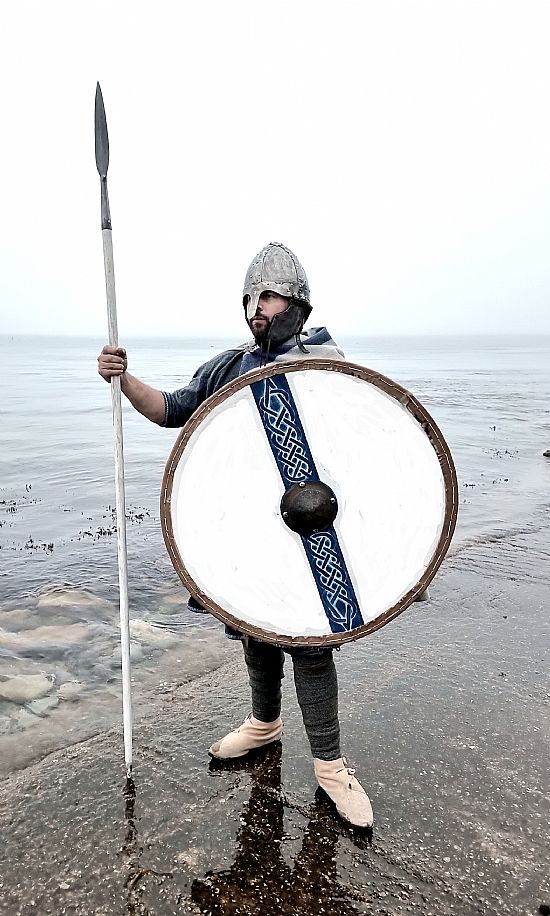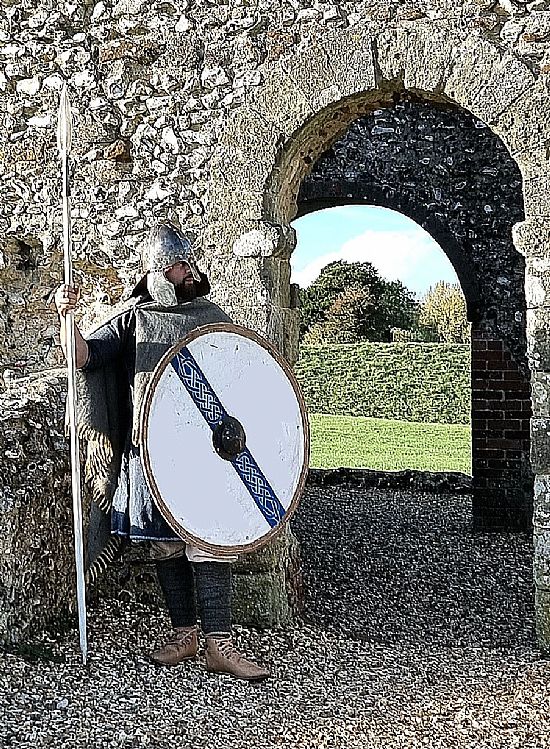Western SÆXIA / Wessex
According to the Anglo Saxon Chronicles, some time after the legendary figure(s) who instigated the myth of King Arthur and his defeat of the Anglo Saxons at Badon Hill, a new warrior emerged possibly of mixed British and Saxon heritage, named Cerdic.

Above image: possible reconstruction of a Fœderati soldier of the "White Spear" Auxiliary Coastal Defence
It is quite possible that Cerdic descended from the established populations of Germanic Fœderati already serving as troops under the Count of the Saxon Shore, likely a Roman Official tasked with the safety of merchant and military logistical shipping in the waters of the Channel.
There are a number of well preserved Roman Saxon Shore forts remaining along the south coast of the UK: Portchester Castle to mention one of the best, however there are also a number of other locations that are known to have been used by this Roman Coastal Defence Infrastructure: Carisbrooke Castle on the Isle of Wight is reputedly built over an earlier Jutish Fortress simply known as "Wihtgarsbyrig". Wihtgar is an Anglo Saxon name, which translates from the Saxon English to "White Spear".
SÆXIA as a reenactment group is currently exploring the possibility that "Wihtgar" may have been a military title rather than a personal name, and that the Fœderati troops serving along the south coast "Saxon Shore" belonged to a distinct Naval/Coast guard regiment that carried distinctive white spears, reflecting the white chalk and limestone cliffs so prevalent along much of this coastal stretch, from Durdle Door & Lyme Bay, and Old Harry Rocks in the West, to the famous White Cliffs of Dover and Beachy Head in the East.
The Saxons were known to be fiercely efficient seamen, with references describing them as being confident at sea, and not so much on land. The Roman Army was powerful because, from the earliest times, the Legions had recruited Auxiliary and Fœderati troops generally with specialist skills like being exceptional horsemen or skilled archers.
It is known that Germanic troops serving in various capacities alongside the Legions were already coexisting with the Romanised Britons, with burial remains in shared cemetaries going back as early as the second century AD
Cerdic may then have been from one of these families: the name Cerdic, along with the names of many of the early Anglo Saxon kings, is a Brythonic name, akin to Ceredoc. However, during the wars which initially halted the westward advance of the Anglo-Saxons, anti-Germanic fervour may well have gripped the Britons, forcing out and displacing anyone they knew to be of mixed heritage.
It is no great leap to imagine that Cerdic felt he had a right to perhaps some old homeland to the west of where he had been brought up, and in the true warrior spirit that marked early Anglo-Saxon culture, formed a warband and launched his campaign to retake territory that he felt was his by right ...


